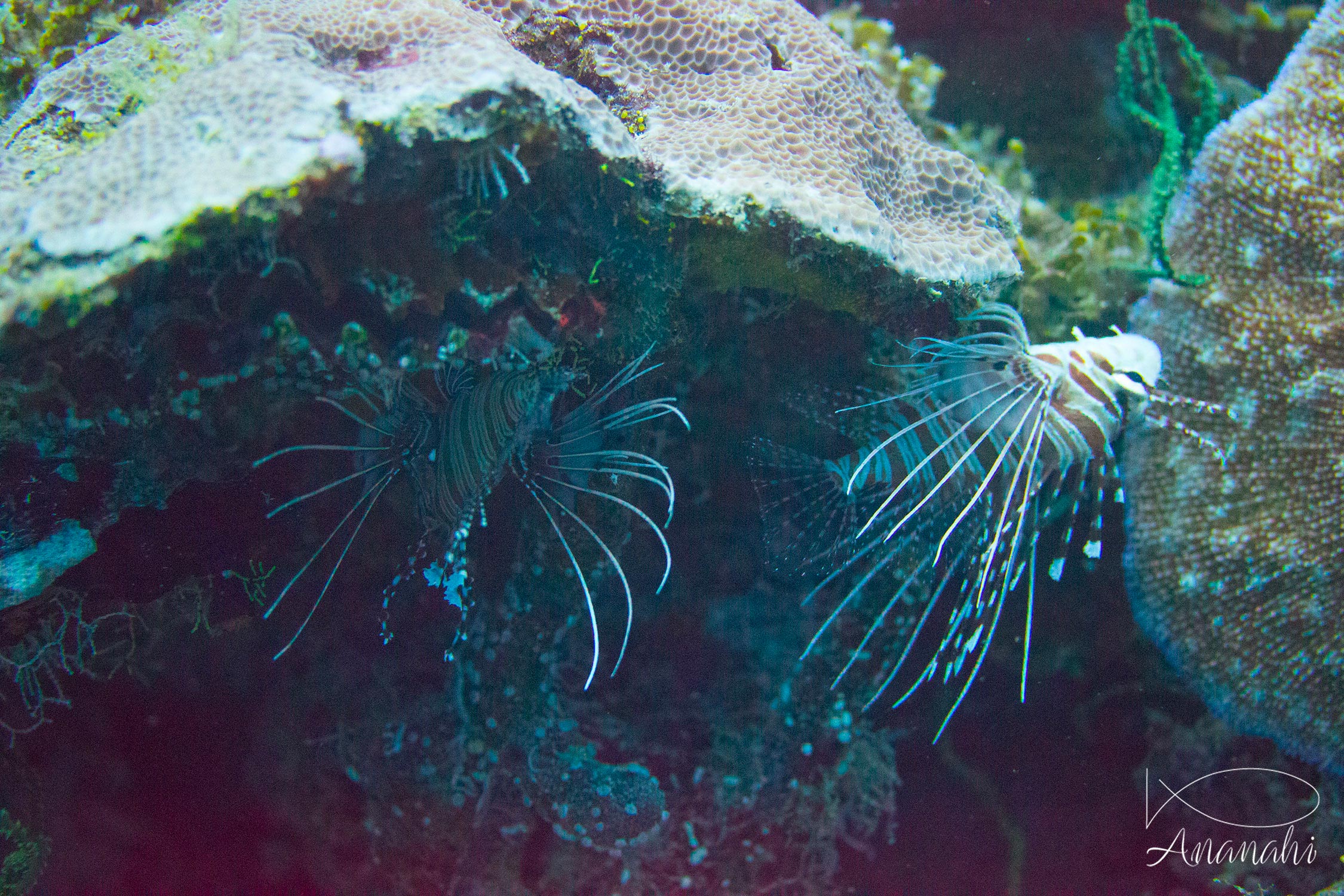
Scientific name: Pterois antennata
Size: Up to 7.9 inches
Color: White, red and brown
Distinguishing feature: White vertical lines on the reddish body. Long white spines on the dorsal or pectoral fins. On the dorsal we find red and white striped thorns.
Where did we see it: Bali and Gili, Zanzibar, Thailand, Mexico, Mayotte, Maldives, Raja Ampat

Scientific name: Pterois antennata
Size: Up to 7.9 inches
Color: White, red and brown
Distinguishing feature: White vertical lines on the reddish body. Long white spines on the dorsal or pectoral fins. On the dorsal we find red and white striped thorns.
Where did we see it: Bali and Gili, Zanzibar, Thailand, Mexico, Mayotte, Maldives, Raja Ampat
It feeds on crabs and shrimps that hunt at night.
During the day, they are found in dark places or upside down against a coral ceiling.
It is a solitary species but can be found in small groups of 2-3 individuals.
We can hear the bull shark is very dangerous because of attacks near La Réunion island.
However, tens of them are living at 600 feet from the famous beach of Playa Del Carmen in Mexico. And there are no attacks.
Some sharks can stay motionless on the sand (white tips reef sharks, nurse sharks, etc.).
These sharks don't have to swim to bring oxygen to their gills like other sharks (grey, hammerheads tc.)
The tiger shark has slender marks similars to the lines of tigers, hence its name.
When it is juvenile, these marks are round and not vertical. They change when it grows.